#BIM Tools & Software
Explore tagged Tumblr posts
Text
Best BIM Tools in 2025 and Selecting the Right BIM Software

BIM is a comprehensive approach in the AEC realm, and its applications and tools hold a significant position. It is vital to choose the right BIM software for project requirements, coordination, and efficiency. Here’s a detailed, curated list of the best BIM software and key factors for selecting it.
#bim modeling services#3d bim services#mep shop drawings#building information modeling#interior visualization#clash detection#revit families creation#3d cad drawings#shop drawing services#bim company#top bim software#best bim tools
2 notes
·
View notes
Text
Services Offered by NEC UAE
NEC UAE is a leading engineering solutions provider specializing in cutting-edge infrastructure development and innovative design services. With a commitment to excellence and sustainability, NEC leverages advanced technology to deliver high-quality engineering solutions for large-scale projects across various industries.
1. Infrastructure Engineering
NEC delivers comprehensive infrastructure engineering solutions, focusing on sustainable and efficient systems to support modern communities. Key Engineering Services include:
Designing and constructing roads and bridges.
Developing water supply and wastewater management systems.
Implementing advanced electrical and telecommunications networks.
2. Road and Highway Engineering:
NEC specializes in designing and constructing roads and highways to optimize traffic flow and enhance safety. Their expertise includes:
Efficient and sustainable road designs.
Solutions to address traffic congestion and improve transportation networks.
Integrating features such as bike lanes and pedestrian pathways.
3. Architectural Design
Nec-uae offers innovative architectural design services that blend functionality with aesthetic appeal. Their services include:
Designing residential, commercial, and mixed-use buildings.
Developing sustainable, eco-friendly design solutions.
Using advanced tools for spatial analysis and design optimization.
4. Structural Design
NEC provides robust and innovative structural design services to ensure safety and durability. Their expertise includes:
Designing foundations and substructures tailored to diverse soil conditions.
Engineering solutions to withstand seismic and wind forces.
Renovating and retrofitting existing buildings for improved performance.
5. Engineering Tools & Software
NEC uses state-of-the-art engineering tools and software to enhance the accuracy and efficiency of projects. These tools aid in:
Precise design modeling and analysis.
Streamlining project workflows.
Ensuring seamless collaboration among teams.
BIM Services
NEC is at the forefront of Building Information Modeling (BIM) technology, offering a range of services to streamline project management and execution:
1. BIM-Project Life Cycle:
Managing the entire project lifecycle from conceptualization to operation using BIM tools.
Ensuring smooth transitions between project phases.
2. BIM Process Flow:
Coordinating workflows among project teams to minimize conflicts.
Utilizing BIM for clash detection and improving project efficiency.
3. BIM Tools & Software:
Employing advanced BIM software for detailed modeling and simulation.
Enhancing visualization with tools like Revit and Navisworks.
With a strong focus on innovation, quality, and sustainability, NEC UAE is a trusted partner for engineering and Construction Management. Whether it's infrastructure development, road engineering, or advanced BIM services, NEC delivers excellence at every step.
#Infrastructure Engineering#Road and Highway Engineering#Architectural Design#Structural Design#Engineering Tools & Software#BIM Services#BIM-Project Life Cycle#BIM Process Flow#BIM Tools & Software
1 note
·
View note
Photo

Revit users, say hello to Forma! Forma by Autodesk is an AI-driven tool for generating and analyzing Building Information Modeling (BIM) projects. With the "Send to Revit" feature, users can easily convert the conceptual models into Revit elements, where they can further develop the design. This integration allows users to take a conceptual proposal developed in Forma and transform it into a detailed Revit project, complete with editable elements such as buildings, terrain, and other site features. Additionally, any changes made in Revit can be sent back to Forma for further analysis and validation, ensuring that the design remains aligned with the initial project goals and environmental considerations. This bidirectional workflow between Forma and Revit enhances the iterative design process, enabling architects to refine their projects more precisely and efficiently.
#AI#forma#revit#autodesk#tools#software#ArchitectsOfTomorrow#architects#simulation#sustainability#technologynews#BIM#designing#AIpowered#buildingdesign#urbanplanning#siteanalysis#newarchitects#futuretech#newcities
0 notes
Text
Discover how construction project management software optimizes project planning, scheduling, and execution. This powerful tool improves collaboration, ensures timely completion, and reduces costs, providing construction professionals with the resources needed for successful project delivery.
#construction project management software#construction estimating software#construction estimating tool#construction BIM software#construction scheduling software#ai construction scheduling#ai construction estimating
0 notes
Text
Top 5 Home Design and Construction Software
The home design and construction industry has evolved significantly with the advent of technology, leading to the development of sophisticated software tools that enhance design processes, improve collaboration, and streamline project management. Here, we explore the top five home design and construction software options available today, highlighting their features, benefits, and suitability for…
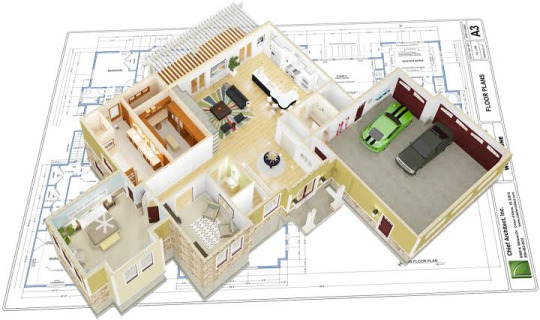
View On WordPress
#3D modeling software#Archicad review#architectural design tools#architectural visualization software#AutoCAD for architects#best home design software#BIM software#CAD software#Chief Architect features#collaborative design tools#construction project management tools#construction software#home design applications#home design software#interior design software#residential design software#Revit alternatives#SketchUp benefits
0 notes
Text
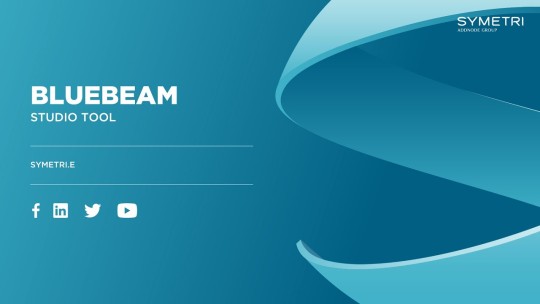
Bluebeam Tool Sets: Your Secret Weapon for Project Success
To leverage the full potential of Bluebeam Revu, consider integrating Bluebeam tool sets in your workflow; 1.Drawing and Document Management: Store, manage and organise entire drawing sets 2.Peer review and quality control: Perform reviews faster and avoid errors 3.Quantity taking and calculation: Take fast, accurate measurements and win more bids 4.Site Logistics: Create and manage detailed site logistics plans 5.Requests for Information (RFIs) and Subs: Publish RFIs in drawings quickly and share them among different entities 6.Roundup: Assign, track and close discrepancies on the go 7.Project handover: Create comprehensive and easy-to-navigate digital handover packages.
#Bluebeam Tool Sets#Bluebeam Software#Bluebeam#Bluebeam Revu Software#Autocad Courses#Autocad Course#BIM Course#Autocad#Autodesk Build#Autodesk Fusion 360#Autodesk Software#Autodesk Docs
0 notes
Text
Remarkable Design Collaboration for Architects with revolutionary construction architect software.
In the ever-evolving world of architecture, architectural design collaboration has emerged as a key catalyst for success. Architects today face a multitude of challenges during the design process, ranging from effective communication to seamless design collaboration among various stakeholders. However, with the advent of innovative technologies and cloud-based collaborative platforms, architects now have the means to transcend these challenges and unlock unprecedented opportunities for creativity and efficiency.

In this article, we delve into the top challenges faced by architects during design collaboration, explore the benefits of design collaboration and construction architect software, and highlight the advantages of partnering with iFieldSmart Technologies for seamless design collaboration.
The global architectural software market is projected to reach a value of $13.67 billion by 2025, indicating the increasing demand for software solutions in the architecture industry.
Challenges Faced by Architects During Design Collaboration:
Communication and Coordination: The architectural design process involves multiple stakeholders, including clients, contractors, engineers, and interior designers. Coordinating and communicating effectively with all parties can be a daunting task. Misinterpretations, delays, and errors can arise due to a lack of clear channels of communication, resulting in potential setbacks in the project timeline.
Version Control and Document Management: Architects often work on projects with multiple design iterations and revisions. Keeping track of changes, managing multiple versions of files, and ensuring everyone has access to the latest updates can become complex and time-consuming. This can lead to confusion and mistakes, ultimately impacting project efficiency.
Collaboration Across Geographical Boundaries: In an increasingly globalized industry, architects often collaborate with teams spread across different locations and time zones. This geographical separation can pose challenges to real-time architectural design collaboration, hindering effective decision-making and feedback exchange.
Design Conflict Resolution: Design collaboration involves integrating inputs and ideas from various stakeholders. Differing perspectives, conflicting design objectives, and aesthetic clashes can arise, leading to disagreements and delays in the decision-making process.
Data Security and Privacy: Design collaboration requires sharing sensitive project information and intellectual property. Ensuring the security and privacy of this data is crucial to safeguarding the architect's work and the client's interests. Inadequate data protection measures can expose designs to risks such as intellectual property theft or unauthorized access.
Benefits of Design Collaboration and Construction Architect Software:
Architectural design collaboration software has been shown to improve efficiency by up to 30%, reducing design iterations and streamlining project timelines.
Enhanced Efficiency: Design collaboration allows architects to streamline their workflows by facilitating real-time collaboration, seamless file sharing, and version control. Construction architect software provides powerful tools to automate repetitive tasks, reducing manual errors and freeing up time for more creative endeavors.
Improved Communication and Coordination: Collaborative platforms foster effective communication among stakeholders, ensuring clarity and reducing misinterpretations. With features like project timelines, task assignments, and notifications, architects can keep everyone involved up to date and foster smoother coordination throughout the project lifecycle.
Iterative Design and Visualization: Design collaboration tools enable architects to easily iterate and visualize designs, incorporating feedback from clients and other team members. Real-time rendering and 3D modeling capabilities empower architects to create immersive visual representations, helping clients and stakeholders better understand the project and make informed decisions.
Design Conflict Resolution: Collaborative platforms provide a centralized space for stakeholders to share their ideas, review designs, and provide feedback. This fosters a collaborative environment that encourages effective conflict resolution and consensus-building, leading to stronger design outcomes.
Data Security and Privacy: Construction architect software often includes robust security features to protect project data and intellectual property. With secure cloud storage, role-based access controls, and data encryption, architects can confidently share and collaborate on projects while maintaining the utmost privacy and security.
Best Practices for Architectural Design Collaboration Software:
90% of architects agree that design collaboration software improves teamwork and collaboration among project stakeholders, leading to better design outcomes.
Establish Clear Communication Channels: Communication is the foundation of successful design collaboration. Establish clear channels of communication among all stakeholders involved in the project, including architects, clients, contractors, and consultants. Utilize communication tools such as email, instant messaging, video conferencing, and project management platforms to ensure effective and timely communication throughout the design process.
Define Roles and Responsibilities: Clearly define the roles and responsibilities of each team member involved in the design collaboration. This helps avoid confusion and ensures that everyone understands their tasks and deliverables. Assign a project manager or coordinator to oversee and facilitate the collaboration, acting as a central point of contact for all stakeholders.
Embrace Collaborative Tools and Software: Leverage collaborative tools and software specifically designed for architects. These tools provide features such as real-time editing, version control, document management, and visualization capabilities. Explore software solutions that integrate seamlessly with existing design software, making it easier to collaborate and share files with team members and clients.
Architects using collaboration software report higher client satisfaction rates, with 87% of clients expressing that they have a better understanding of the design process and are more involved in decision-making.
Encourage Regular Meetings and Feedback Sessions: Schedule regular meetings and feedback sessions to discuss design progress, address challenges, and gather feedback from all stakeholders. These meetings can be conducted in person or virtually, depending on the geographical location of the team members. Encourage open and constructive dialogue, allowing everyone to express their ideas and concerns while fostering a collaborative environment.
Emphasize Design Visualization: Visualize designs early and frequently to ensure alignment among team members and stakeholders. Utilize 3D modeling, virtual reality (VR), and augmented reality (AR) technologies to create immersive experiences and help clients and stakeholders better understand the design intent. This visual representation facilitates effective communication, minimizes design conflicts, and enables quicker decision-making.
Document and Track Changes: Implement a robust system for documenting and tracking design changes. Maintain a clear record of design iterations, revisions, and decisions made throughout the collaboration process. This ensures that all team members have access to the latest version of the design and helps avoid confusion or conflicts arising from outdated information.
Collaborative software enables real-time design iterations, reducing the time required to incorporate changes and modifications by up to 50%.
Foster a Collaborative Culture: Cultivate a culture of collaboration within the design team. Encourage open communication, respect diverse perspectives, and value input from all stakeholders. Promote cross-disciplinary collaboration by facilitating knowledge-sharing and brainstorming sessions. Recognize and appreciate the contributions of team members, fostering a sense of ownership and commitment to the project's success.
Prioritize Data Security and Privacy: Ensure the security and privacy of project data and intellectual property. Implement robust security measures, including secure cloud storage, data encryption, and role-based access controls. Educate team members on best practices for data protection, such as password management and secure file-sharing protocols. Establish non-disclosure agreements (NDAs) with clients and contractors to protect sensitive information.
Embrace Continuous Improvement: Design collaboration is an iterative process. Encourage a culture of continuous improvement by seeking feedback from team members and stakeholders at the end of each project phase. Identify areas for enhancement and implement changes to streamline collaboration processes, enhance efficiency, and deliver better design outcomes in future projects.
By following these best practices, architects can overcome challenges and maximize the potential of design collaboration. Effective communication, utilization of collaborative tools, emphasis on design visualization, and a collaborative culture all contribute to a more efficient and successful architectural design process.
In a survey conducted in 2020, 75% of architecture firms reported increased demand for remote collaboration tools, emphasizing the importance of software solutions that facilitate collaboration regardless of geographical location.
Benefits of Design Collaboration with iFieldSmart Technologies:
Seamless Integration and Compatibility: iFieldSmart Technologies offers a comprehensive suite of collaborative tools tailored specifically for architects. Their software seamlessly integrates with existing design software, enabling architects to leverage their preferred tools while benefiting from enhanced collaboration features.
Centralized Project Management: iFieldSmart Technologies provides a centralized platform for project management, bringing together architects, clients, contractors, and other stakeholders in a single collaborative space. This eliminates the need for scattered communication channels and disjointed workflows, leading to improved project efficiency and smoother architectural design collaboration.
85% of architecture firms consider data security and protection of intellectual property as the most important features of design collaboration software, ensuring that sensitive project information is safeguarded.
Real-time Collaboration and Feedback: iFieldSmart Technologies offers real-time collaboration features such as live editing, instant messaging, and virtual meetings. Architects can collaborate with team members and clients in real time, share ideas, and receive immediate feedback, enabling faster decision-making and reducing project timelines.
Streamlined Document Management: With iFieldSmart Technologies, architects can efficiently manage and organize project documents, including drawings, specifications, and contracts. The platform provides version control, revision history, and document tracking, ensuring that all stakeholders have access to the latest files and reducing the risk of errors or miscommunication.
Architectural design collaboration software can save up to 70% of time spent on document management tasks, allowing architects to focus more on design creativity and project coordination.
Advanced-Data Analytics: iFieldSmart Technologies incorporates advanced data analytics capabilities that provide valuable insights into project performance, resource allocation, and productivity. Architects can leverage these insights to optimize their design processes, identify bottlenecks, and make data-driven decisions for improved project outcomes.
Architectural design collaboration software has been found to reduce communication errors and misinterpretations by up to 80%, ensuring clear and effective communication among team members.
Conclusion:
In an industry as dynamic and collaborative as architecture, design collaboration is an indispensable tool for success. While architects face numerous challenges during the design process, innovative technologies and construction architect software have transformed the way they collaborate and overcome these obstacles.
By embracing design collaboration and leveraging robust construction architect software, architects can experience a multitude of benefits. Enhanced efficiency, improved communication and coordination, iterative design and visualization, effective conflict resolution, and robust data security and privacy are among the advantages that architects can reap.
Partnering with iFieldSmart Technologies further amplifies the power of design collaboration. With their seamless integration, centralized project management, real-time collaboration, streamlined document management, and advanced data analytics capabilities, architects can optimize their workflows, foster stronger collaboration, and deliver exceptional architectural designs.
As architects continue to navigate the complexities of the design process, embracing design collaboration and harnessing the potential of innovative technologies will undoubtedly propel them toward greater success, efficiency, and creativity. By breaking down barriers and fostering effective collaboration, architects can push the boundaries of their designs and create architectural marvels that inspire and shape the world we live in.
For more information: +1 (844) 358-0400
Visit us: -https://www.ifieldsmart.com/architect-designers
#construction management software#team management software#construction scheduling software#construction management tool#bim software#best construction management software#construction project management
0 notes
Text

NAVIGATING PROJECT MANAGEMENT IN THE AEC INDUSTRY
Navigating Project Management in the AEC industry involves a series of interconnected tasks that require effective planning, execution, monitoring, and control. By following best practices and leveraging project management methodologies such as APM, SCRUM, KANBAN, or the Traditional WATERFALL Project Management Methodology, the AEC professionals can successfully deliver complex projects while meeting stakeholder expectations and achieving project objectives.
As an architectural manager with a Master of Architecture degree and an architectural engineering degree from reputable institutes, having experience in project and design management for large-scale commercial facilities, multi-story offices, and high-rise administration buildings, I can provide the necessary artifacts to enhance project success, improve team collaboration, and effectively handle project complexities in the architecture, engineering, and construction (AEC) sector.
1. Set Clear Goals and Objectives:
Define project scope, including deliverables and constraints.
Establish SMART (Specific, Measurable, Achievable, Relevant, Time-bound) goals.
Align goals with stakeholder expectations and project requirements.
Obtain buy-in from key stakeholders on project objectives.
2. Develop a Comprehensive Project Plan:
Create a detailed work breakdown structure (WBS) to organize project tasks.
Define project milestones and dependencies.
Develop a project schedule with timelines and resource allocation.
Identify risks and develop a risk management plan.
Establish a budget and financial plan for the project.
3. Foster Effective Communication:
Establish communication channels and protocols for project team members.
Hold regular project meetings to discuss progress, issues, and updates.
Use clear and concise language in all communications.
Encourage open and transparent communication among team members.
Address communication barriers and conflicts promptly.
4. Embrace Technology and Communication:
Utilize project management software for task tracking and collaboration.
Implement communication tools such as emails, instant messaging, and video conferencing.
Leverage cloud-based platforms for document sharing and version control.
Provide training and support for team members on project management tools.
Stay updated on new technologies and tools to improve project efficiency.
5. Manage Change Effectively:
Establish a change control process to evaluate and approve changes to project scope.
Communicate changes to stakeholders and assess their impact on project objectives.
Update project documentation and plans to reflect approved changes.
Monitor changes to prevent scope creep and ensure project alignment with goals.
Evaluate the risks and benefits of proposed changes before implementation.
6. Foster Collaboration and Teamwork:
Encourage team members to share ideas, feedback, and best practices.
Foster a collaborative work environment that values diversity and inclusivity.
Promote team building activities and recognize team achievements.
Facilitate cross-functional collaboration and knowledge sharing.
Resolve conflicts and promote a positive team culture.
7. Continuously Monitor and Evaluate Progress:
Track project performance against key performance indicators (KPIs).
Conduct regular project reviews to assess progress and identify areas for improvement.
Monitor project risks and issues and take corrective actions as needed.
Evaluate project outcomes against initial goals and objectives.
Use lessons learned to make informed decisions and optimize project performance.
By focusing on these subtasks within each point, project managers can enhance project success, improve team collaboration, and effectively manage project complexities in the Architecture, Engineering, and Construction (AEC) industry.
Sonetra KETH (កេត សុនេត្រា) •Architectural Manager, Project Manager, BIM Director •建築師經理, 專案經理, BIM總監 •Giám đốc kiến trúc, Giám đốc dựán, Giám đốc BIM •RMIT University Vietnam + Institute of Technology of Cambodia
#Pinned#Avatar#sonetra-keth#Badge image.#Nov 1#2023#Sonetra KETH#Architectural Manager#Project Manager#BIM Director#Thought Leadership#Design Management#Project Management#BIM Management#建筑师经理、专案经理、BIM总监#Giám đốc Kiến Trúc#Giám đốc Dựán#Giám đốc BIM#<meta name=“google-adsense-account” content=“ca-pub-9430617320114361”>#Sonetra Keth#blueprint#Inspired Urban Planning#Urban Planning Framework#crossorigin=“anonymous”></script>#កេត សុនេត្រា#នេត្រា#NETRA#netra#n8tra#N8TRA
5 notes
·
View notes
Text
How Civil Engineering Courses Are Evolving with New Technology
Civil engineering is no longer just about bricks, cement, and bridges. It has become one of the most future-focused fields today. If you are planning to study civil engineering, you must understand how the course has evolved. The best civil engineering colleges are now offering much more than classroom learning.
You now study with technology, not just about it. And this shift is shaping your career in ways that were never possible before.
Technology is Changing the Civil Engineering Classroom
In the past, civil engineering courses relied on heavy theory and basic field training. Today, you learn through software, simulations, and smart labs. At universities like BBDU in Lucknow, classrooms are powered by tools like AutoCAD, Revit, STAAD Pro, and BIM.
These tools help you visualize structures, test designs, and even simulate natural forces.
You work on 3D modeling tools
You test designs virtually before real-world execution
You understand smart city layouts and green construction methods
This means your learning is hands-on, job-ready, and tech-driven.
You Learn What the Industry Actually Uses
Most construction and infrastructure companies now depend on digital tools to plan, design, and execute projects. This is why modern B.Tech Civil Engineering courses include:
Building Information Modelling (BIM)
Geographic Information Systems (GIS)
Remote Sensing Technology
Drones for land surveying
IoT sensors in smart infrastructure
Courses in colleges like BBDU include these topics in the curriculum. You do not just learn civil engineering. You learn the tools that companies expect you to know from day one.
The future of Civil Engineering is Data-Driven
You might not think of civil engineering as a data-heavy field. But now, big data is used to monitor structural health, traffic flow, and resource planning. Many universities have added data analysis and AI basics to help you understand how smart infrastructure works.
By learning how to handle real-time data from buildings or roads, you become more skilled and more employable.
Real-world exposure is Now Part of the Course
Good civil engineering colleges in Uttar Pradesh understand that you need industry exposure. Colleges like BBDU offer:
Internships with construction firms and government bodies
Industry guest lectures and site visits
Capstone projects linked to real problems
You are not just attending lectures. You are solving real-world construction challenges while still in college.
Why Choose BBDU for Civil Engineering?
In Lucknow, BBDU is one of the few private universities offering a modern civil engineering course with world-class infrastructure. You learn in smart labs, access tools used by top firms, and receive career counseling throughout the program.
Here’s what makes BBDU a smart choice:
Advanced labs and smart classrooms
Training in AutoCAD, STAAD Pro, BIM
Live projects and on-site construction learning
Career cell and placement support
Affordable fees and scholarships for deserving students
Civil Engineering is Still One of the Most Stable Careers
Reports show that India will spend over ₹100 lakh crores on infrastructure in the next few years. Roads, smart cities, renewable power plants, metros – all need civil engineers. And companies prefer students trained in construction technology, digital tools, and real-world planning.
So, if you're thinking about joining a course, look at how it prepares you for tomorrow.
The future of civil engineering is digital, and your education should be too. Choose a program that keeps up with the times. Choose a university that helps you build more than just buildings – it helps you build your future.
Apply now at BBDU – one of the most future-focused civil engineering colleges in Uttar Pradesh.
2 notes
·
View notes
Text
Planning and estimating construction projects are crucial to their success. There are many complex processes involved. As part of this process, construction takeoffs are essential. Construction takeoffs are itemized and quantified lists of the materials, labor, and other resources required for construction projects.
Construction takeoffs are essential to project estimation, planning, and success in general. They give a thorough analysis of the necessary labor, materials, and resources, allowing for precise cost estimation and efficient project management. With enhanced accuracy and time savings, the process has been further streamlined with the introduction of digital takeoff tools and BIM-based solutions.
Importance of Construction Takeoffs
Accurate project estimation
Accurate project estimation is built on the foundation of construction takeoffs. Takeoffs give project stakeholders a thorough grasp of the project scope and associated costs by estimating the materials, equipment, and labor required. Realistic timetables and budgets can be created with the use of this information.
Enhanced project planning
A crucial aspect of project planning is takeoffs. Construction teams may create accurate project timetables, manage resources wisely, and spot potential bottlenecks or areas that need extra care with a full assessment of the available resources. This degree of planning ensures that the construction process runs more smoothly and helps to avoid delays and expensive change orders.
Improved communication and collaboration
Communication among project stakeholders is standardized by construction takeoffs. Takeoffs allow for simple and clear communication between architects, contractors, suppliers, and other team members by quantifying and clarifying requirements. This promotes teamwork and increases overall project efficiency by cutting down on ambiguity and errors.
Methods for Construction Takeoffs
Manual takeoffs
Traditional manual takeoffs entail looking at blueprints, plans, and specifications to manually calculate the amount of resources and materials needed. Even though it takes a lot of time and is prone to mistakes, this method is still employed occasionally, especially for smaller projects or when digital versions of certain details are not available.
Digital takeoff software
The building sector has undergone a change since the introduction of digital takeoff software. By eliminating laborious computations and lowering human error, these software solutions allow users to electronically measure quantities directly from digital designs. Software for digital takeoffs streamlines the process by providing features like annotation tools, automatic measurements, and simple cooperation.
3D modeling and BIM
The building sector has undergone a change since the introduction of digital takeoff software. By eliminating laborious computations and lowering human error, these software solutions allow users to electronically measure quantities directly from digital designs. Software for digital takeoffs streamlines the process by providing features like annotation tools, automatic measurements, and simple cooperation.
Read more
3 notes
·
View notes
Note
Sorry if you’ve answered this question before, but how do you make your gifs?
With an outdated version of photoshop and a lot of patience 😤 my messy process under the cut
let's say i have this movie downloaded in .mp4 i open it in windows movie maker - or any other software that lets you do quick and easy edits and whatnot but me i use wmm even tho it's obsolete i knoooow leave me alone - cut the scene i want to gif out and save it into this tiny little file

then i open photoshop and go into import > video frames into layers (i may be a little bit off in how things are called on PS in english, but they should be in the same places anyway)
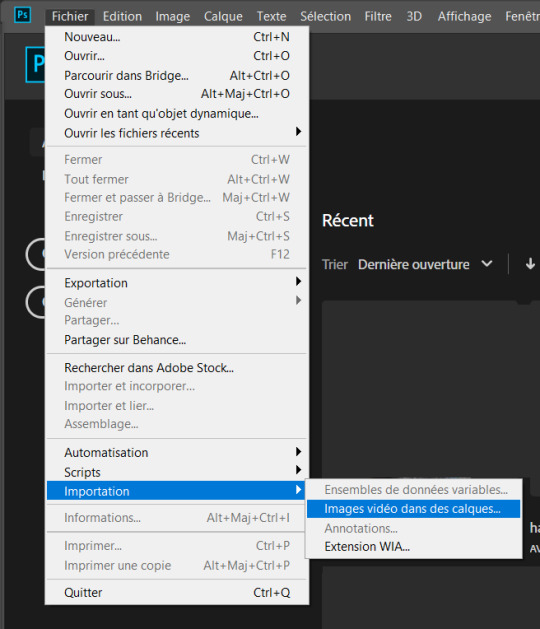
this little popup will open

since my file is exclusively the thing i want to gif i don't need to bother with the little arrow-ish things underneath the video player, they're there if you need to shorten your thing or like cut into it.

this bit here needs to be checked like this, it'll set up the gif animation or whatever. so yeah then click Ok
bim bam boom photoshop will open like this
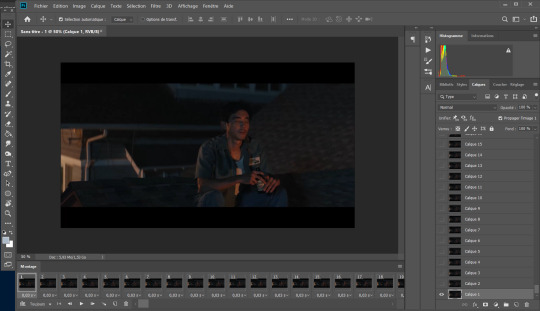
big scary image with many tiny scary images, so first of all what i do is get on the cropping tool

this will show up in the toolbar up top

and in there you set the dimensions of the gif, 1 gif in a gifset that takes up the whole post has to be 540px wide for 2 gif next to each other it's 268px wide and i can't remember 3 by 3 but i never do that so whatever who cares.
once you've set up the dimensions you want, you got this grid thing to move around and set however you want it to be


and then you wait as it painstakingly takes its time to do it

boom! it's done!

so that's your gif raw and unprepared without any filters or whatever, no length, no speed, nothing!
down there you've got the frames of the gif, depending how long is it'll be either a lot or very very short, in this case it's 277 frames, so already you know it's not gonna be just one gif but probably two or three - which i knew btw that's on purpose!!

first thing i do when all the cropping and setting up is done is scroll all the way through the frames to see if there's a bit that won't make it into the gif, and here, there is

these last four frames show a different bit of the scene because i cut shit very messily and don't check before opening photoshop but you know! trust the process! so make sure to select the unwanted bunch and delete them

so now hurray the gif is 273 frames and it's only the one scene i want

and now the fun not fun starts!
to the right you got these, the layers


so you gotta scroll all the way up and NOT forget to click on the very last layer before you start playing around with filters and all that

this little guy right here is my bestien he's the only one i use when editing gifs, fuck everybody else on that row. when making gifs i mostly just use a combination of those three things, brightness/contrast, vibrancy and photo filters
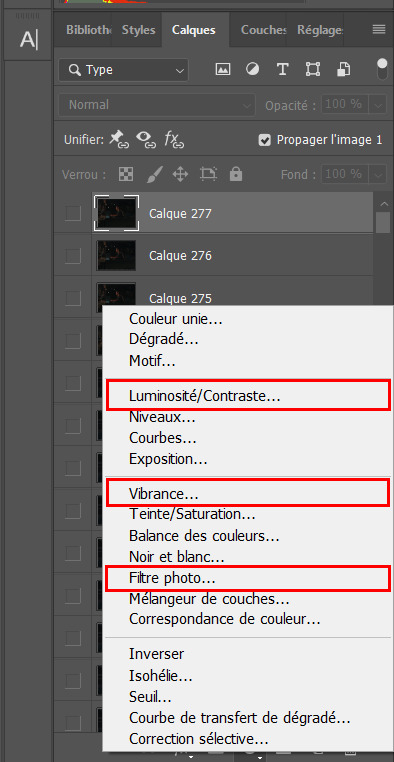
so anyway, let's fool around with those little things and make a gif (i realize now the scene is very dark and it will look very ugly but never mind! we carry on) so there a bunch of random settings added - you gotta make sure they are all the way on top of everything or else they just won't appear on every single frame

what i do then is probably very stupid and there's probably a better way to do it, but MY PROCESS, so i divide the amount of frames i've got by the number of gifs i want to make in a set, so 273/3 that's 91 (thank you google), so we look back down at the frames

and then scroll aaaaaalllll the way back to frame 91 (if you hold shift and use the wheel it'll be much faster) and while still holding shift pressed down click on frame 92
that will select every frame from the last to that and we delete that shit


so now we only have 91 frames and that's one gif. so let's save it! but wait, no you forgot to do something! see the 0.03s? that's the gif speed or whatever, idk how it works but 0.03s is too fast, me i usually use 0.05s so what you do next is select every one of those frames you've got left and click the little pointing down arrow, that'll open that

click Other... and then set it as the speed you want


ok so your gif is at the correct speed NOW you can save it so it's file > export > save for web
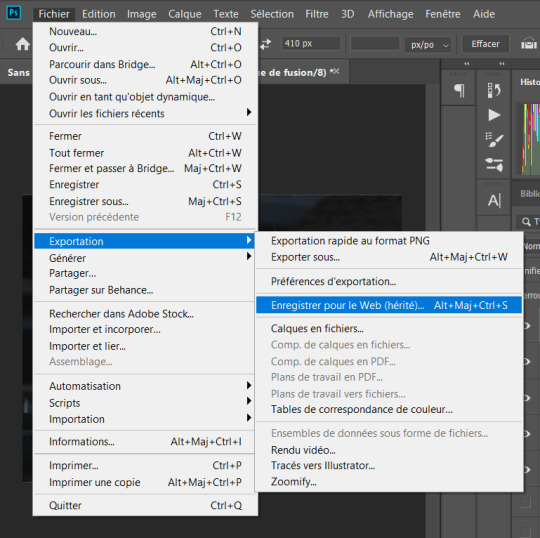
this new popup will appear

currently as of 2024 gifs can't be bigger than 10Mb/Mo, this one is 4mo

so we're good we're fine. so then you just click save, name the file whatever you want and VOILAAAA, a djeef!

(and then undo the delete and repeat everything for the other two gifs you'd want to make in that set)
7 notes
·
View notes
Text
Ideate Software
Ideate Software is an Autodesk® Authorized Developer and is a member of the Autodesk Developer Network. Ideate Software builds Revit® software plugins to help customers get the most out of Autodesk Revit software. We serve companies in the areas of building design, engineering, construction, and facilities management.
#Ideate Software#Automation Bim#Revit Automation Plugin#Revit To Excel#Revit Excel Link#Top Revit Plugins#Revit Plugin Download#Revit Automation Tools#Revit Automation Tool#Revit Revision Manager#Revit Manage Revisions#Revit Plugins Solutions#Revit Tool#Revit Plugin
0 notes
Text
Revit Architecture Online Training - cubikcadd

Revit Architecture Online Training - cubikcadd
In today’s fast-paced design and architecture world, staying ahead of the curve requires mastering the right tools. One of the most powerful and widely used software platforms for architects, engineers, and construction professionals is Autodesk Revit. If you’re serious about elevating your skills and advancing your career, enrolling in a Revit course can be a game-changer. This blog will explore the benefits of taking a Revit course, what you can expect to learn, and why it's essential for anyone in the design industry.
What Is Revit?
Revit is a Building Information Modeling (BIM) software developed by Autodesk that allows architects, engineers, and construction professionals to design, visualize, and manage building projects in a 3D environment. Unlike traditional CAD software, Revit is more than just a drawing tool. It enables users to create intelligent models with real-world information about materials, structures, and systems, providing a holistic approach to design and construction.
Why Take a Revit Course?
A Revit course is crucial for professionals who want to maximize their productivity and accuracy in design. Here are a few key reasons why learning Revit is a smart investment in your future:
1. Industry Standard
Revit is an industry-standard BIM software widely used in architectural firms, engineering companies, and construction projects worldwide. Employers often seek professionals proficient in Revit, making it a valuable skill on your resume.
2. Improve Design Efficiency
Revit allows you to work smarter, not harder. By learning how to use the software’s advanced features, such as parametric modeling and automatic updates across the project, you can significantly reduce the time spent on revisions and manual updates.
3. Enhance Collaboration
Revit supports team collaboration with ease. A Revit course will teach you how to work with cloud-based models, enabling multiple users to access, modify, and update a single project file in real-time. This is especially important in large projects where coordination between different disciplines (architecture, structural engineering, MEP) is crucial.
4. Create Detailed 3D Visualizations
One of the standout features of Revit is its ability to generate highly detailed 3D models and visualizations. By enrolling in a Revit course, you’ll learn how to create photorealistic renders, walkthroughs, and simulations, helping you and your clients better understand the design before construction even begins.
5. Better Project Management
Revit’s intelligent data system ensures that every part of your model is interconnected. This allows for accurate cost estimates, material takeoffs, and construction timelines. A Revit course will show you how to use these tools to improve project management, ensuring projects stay on time and within budget.
What Will You Learn in a Revit Course?
From basic to advanced, a well-designed Revit course usually covers a wide range of topics. The following summarises what you can anticipate learning:
1. Introduction to BIM and Revit Interface
You’ll start by getting familiar with BIM concepts and the Revit interface. This includes learning about tools, menus, and how to navigate the software efficiently.
2. Modeling Techniques
The course will teach you how to create accurate architectural models, including walls, floors, roofs, doors, and windows. You’ll also learn how to model structural components and MEP systems, depending on the course's focus.
3. Documentation and Annotations
Learn how to generate construction documentation, such as floor plans, sections, elevations, and details. You’ll also cover how to annotate your drawings with dimensions, text, and other symbols necessary for clear communication with contractors and clients.
4. Advanced Modeling and Customization
Once you master the basics, you’ll dive into more advanced topics such as custom family creation, curtain wall systems, complex roofs, and parametric design, which allows you to create flexible models.
ph : +91-9500024134
Visit our website: https://www.cubikcadd.in/revit-training-in-coimbatore.html
Ramnagar Branch, Coimbatore : https://maps.app.goo.gl/boAyupUoqtda9fXU6
Saravanampatti Branch, Coimbatore : https://maps.app.goo.gl/xrtknmSk76d8cnQV9
OMR Branch, Chennai : https://maps.app.goo.gl/HCpHhcFHGdKsPCPx7
Facebook: https://www.facebook.com/cubikcadd
Instagram: https://www.instagram.com/cubikcadd/
Tiwtter: https://x.com/CubikCadd
2 notes
·
View notes
Text
From 2D to BIM: Upgrading Your Architectural Design Process
Are you still stuck in the 2D era?
Upgrade your architectural design process to the cutting-edge technology of Building Information Modelling (BIM). This game-changing innovation is transforming the architecture industry, and it's time to join the revolution.
The Limitations of 2D Design
Traditional 2D architectural design has served us well, but it's time to acknowledge its constraints. 2D designs lack the depth and detail required for modern construction projects. if it's fail to provide a comprehensive understanding of the building's components, leading to errors, miscommunications, and costly rework.
Lack of Clarity: 2D designs can be ambiguous, leading to misunderstandings and misinterpretations.
Inadequate Visualization: 2D designs struggle to convey complex spatial relationships and design intent.
Inefficient Collaboration: 2D designs make it challenging for stakeholders to collaborate and communicate effectively.
Error-Prone: 2D designs are more susceptible to human error, leading to costly rework and delays.
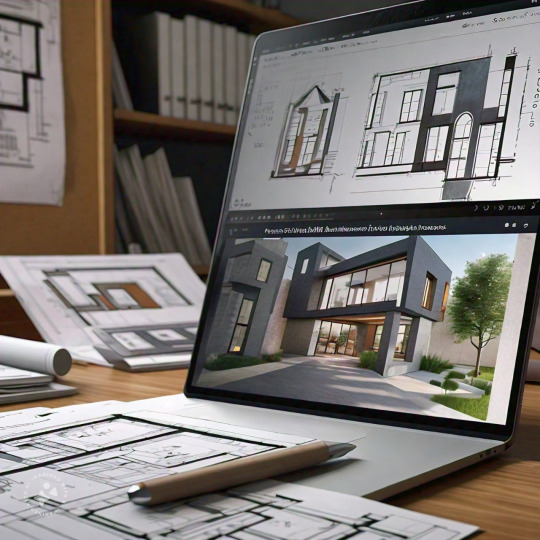
Enter BIM: The Future of Architectural Design
BIM is more than just a design tool – it's a collaborative platform that unifies architecture, engineering, and construction professionals. With BIM, you can create detailed, data-rich models that simulate real-world performance. This revolutionary technology enables:
Improved Collaboration: Stakeholders can access and contribute to the design process in real-time, ensuring everyone is on the same page.
Enhanced Visualization: 3D models and simulations facilitate better understanding and communication, reducing errors and miscommunications.
Increased Accuracy: Automated clash detection and interference checking minimize errors, ensuring a more efficient design process.
Efficient Project Management: Real-time tracking and analysis streamline the construction process, reducing delays and cost overruns.
Seamless Transition with Architectural BIM Services
Upgrading to BIM doesn't mean starting from scratch. Our expert Architectural BIM Services will guide you through a seamless transition, leveraging your existing designs to create rich, data-driven models. Our comprehensive services include:
Architectural BIM Modeling: Transforming 2D designs into detailed, interactive 3D models, enabling enhanced visualization and collaboration.
Architecture CAD Drawing: Converting traditional CAD files into BIM-compatible formats, ensuring a smooth transition.
Architectural 3D Modeling Services: Creating immersive, photorealistic visualizations, enhancing design communication and stakeholder engagement.
Architectural 3D Rendering Services: Generating stunning, high-resolution images and animations, perfect for marketing and presentation purposes.
Benefits of BIM
Enhanced Creativity: Explore new design possibilities with data-driven models, unlocking innovative solutions.
Improved Productivity: Streamline your workflow with automated processes, reducing design time and costs.
Increased Competitiveness: Stand out with cutting-edge technology and innovative solutions, attracting clients and projects.
Better Decision-Making: Data-driven models enable informed decisions, reducing risks and improving project outcomes.
Sustainability: BIM facilitates sustainable design, reducing environmental impact and promoting green building practices.
Implementing BIM in Your Practice
Upgrading to BIM requires a strategic approach. Here's a step-by-step guide to ensure a smooth transition:
Assess Your Current Workflow: Identify areas for improvement and determine the best approach for your practice.
Choose the Right BIM Software: Select a software that aligns with your needs and skill level.
Train Your Team: Invest in comprehensive training to ensure a seamless transition.
Develop a BIM Execution Plan: Establish clear goals, processes, and standards for your BIM implementation.
Start Small: Begin with a pilot project to test and refine your BIM workflow.
The architectural design process is evolving, and BIM is leading the charge. Don't let outdated design processes hold you back. Embrace the future of architecture with our expert BIM services. Discover the advantages of enhanced creativity, improved productivity, and increased competitiveness. Join the BIM revolution today and transform your architectural design process. Contact us to learn more about our Architecture BIM Services and take the first step towards a more efficient, collaborative, and innovative future.
#architecture#interiors#bim#construction#autocad#architectdesign#architecturalbimservices#modern architecture
2 notes
·
View notes
Text
Add Value to Construction Projects by PDF to BIM Conversion

PDF to BIM conversions allows architects, engineers, advanced software such as Revit, and other collaborators to work efficiently with deep insights, especially for renovation and reconstruction projects. With that keeping in mind, it has become an influential tool with use of advanced softwares such as Revit where PDF to BIM is accurately converted and with the smallest of details for professionals to carry out the project's success. Please take a look at how PDF conversion to a BIM model can add value to a project with accurate end results.
#cad to bim#cad to bim services#cad to bim conversion#cad to revit#cad to revit services#autocad to bim conversion#autocad to revit#pdf to bim#pdf to revit#pdf to bim services#pdf to 3d model#pdf to revit services#pdf to bim conversion services#cad to bim modeling services#cad to revit converter#autocad to bim services
2 notes
·
View notes
Text
Exploring the Diverse Landscape of BIM Software in Construction: A Comprehensive Guide
Introduction: In the ever-evolving field of construction, Building Information Modeling (BIM) has emerged as a transformative technology that revolutionizes the way buildings are designed, constructed, and managed. BIM software plays a pivotal role in enhancing collaboration, improving efficiency, and minimizing errors throughout the construction process. This article delves into the various…
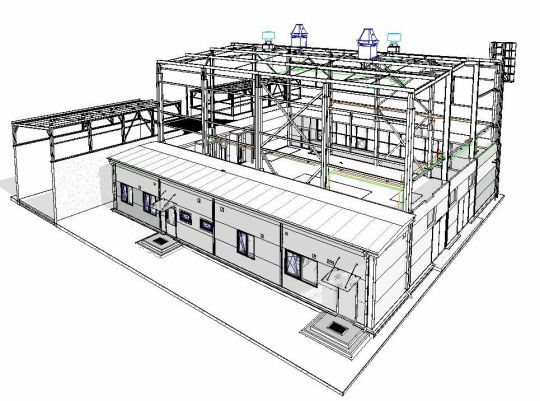
View On WordPress
#architectural design software#as-built documentation#BIM model accuracy#BIM software#Building Information Modeling#collaboration platforms#construction industry advancements#construction management software#construction project efficiency#Construction Technology#cost estimation tools#facility maintenance optimization#facility management solutions#laser scanning technology#LiDAR applications#MEP systems modeling#point cloud integration#project stakeholders collaboration#real-time coordination#structural engineering tools#sustainable building practices
0 notes